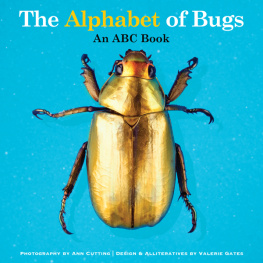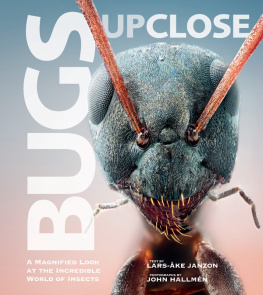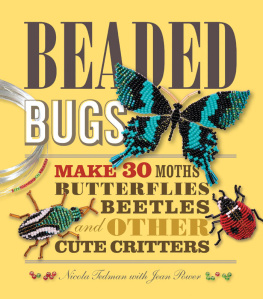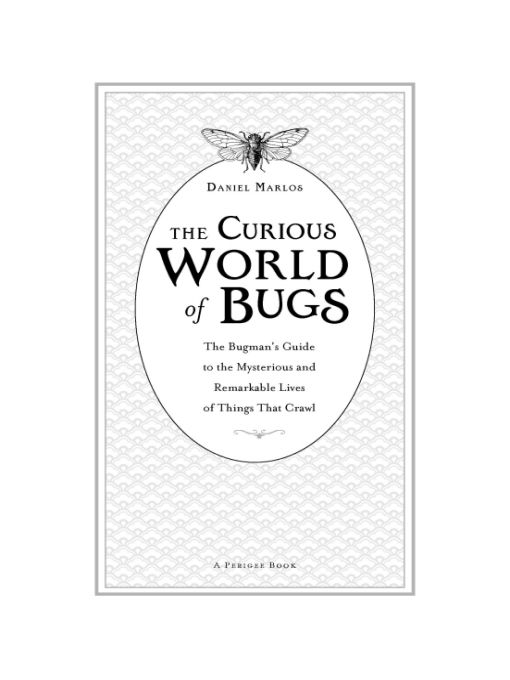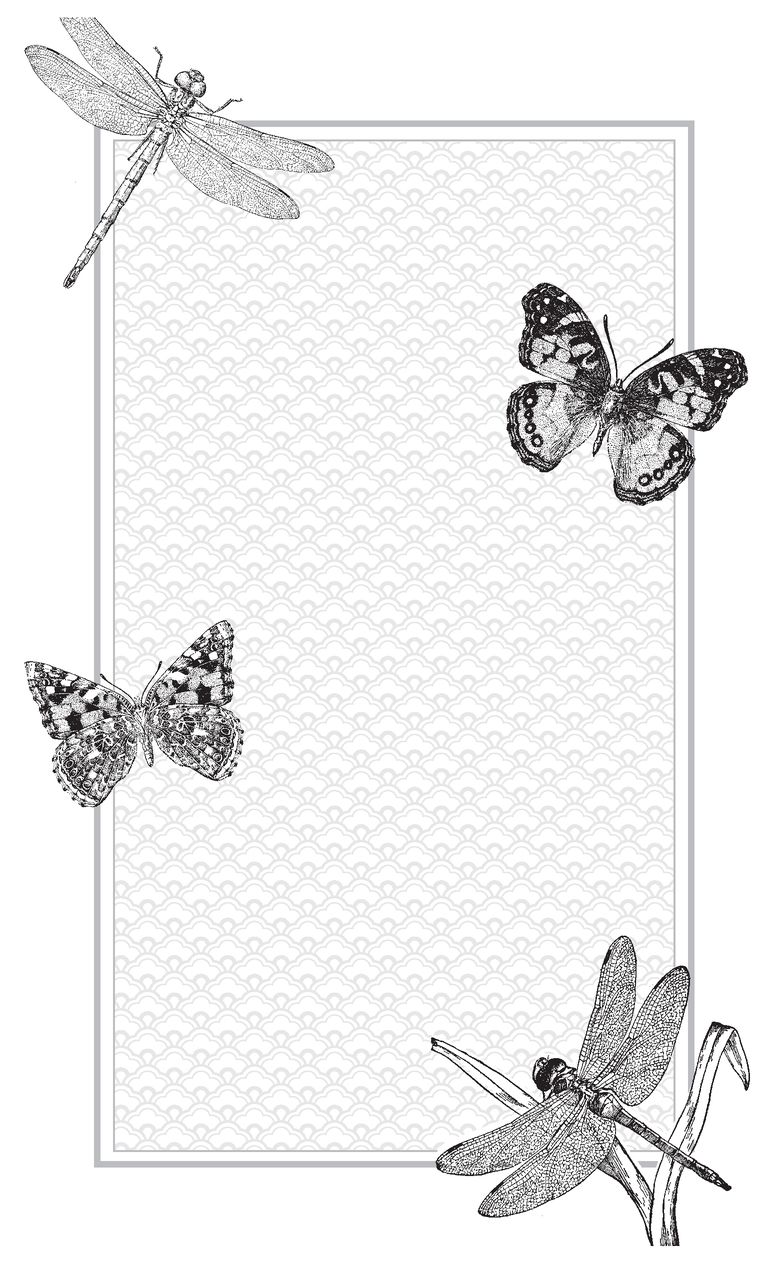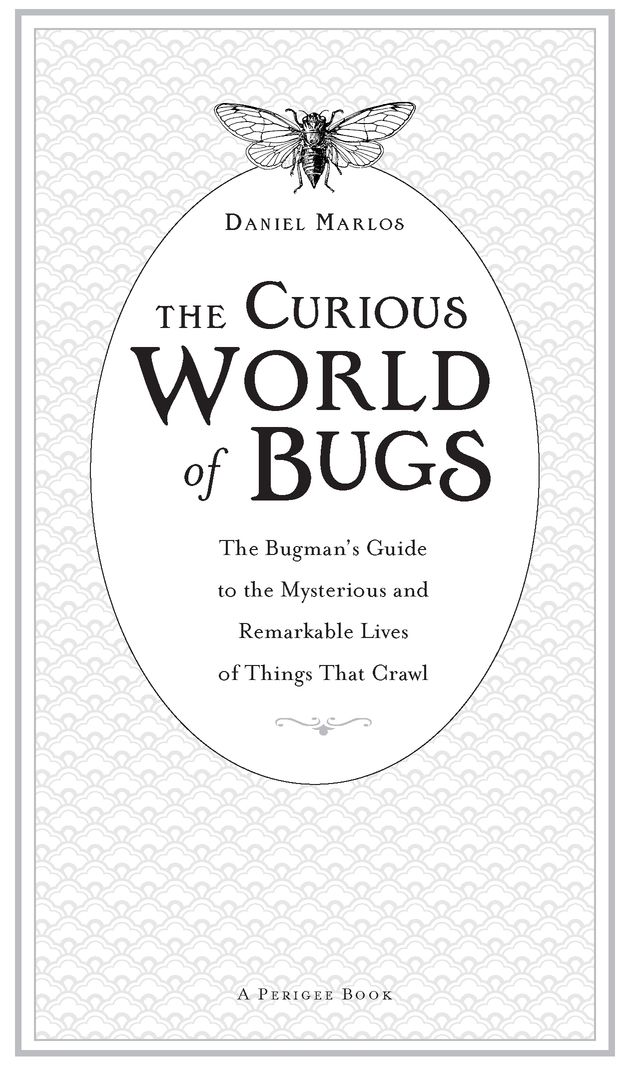Table of Contents
This book is dedicated to my mother, Pearl Marlos,
who nurtured my early interest in nature with her own love for gardening
and then indulged me by regularly taking trips to the country
along the Pennsylvania-Ohio border, where I could tramp about in the
woods and fields and explore the creeks in search of bugs.
Acknowledgments
A very special thanks to my longtime collaborator Lisa Anne Auerbach, whose zine American Homebody launched the Whats That Bug? column.
I am indebted to Eric Eaton, whose frequent contributions and difficult identifications helped give the website credibility.
Without Daniel Jacobss generous gift of bandwidth, Whats That Bug? would not have had the continuous web presence that it has enjoyed for the past several years.
And finally, thank you to the web-browsing readership, whose dedication and contributions of entertaining stories and wonderful photographs have created a true network of bug enthusiasts.
Introduction
WHEN I STARTED working on the idea to write a curious miscellany of wacky, wonderful, and intriguing facts about bugs that Ive collected during my years of research, I knew I had a cast of over 1 million characters worldwide, including 86,346 recorded insects in the United States and Canada alone. Each one had a story I could tell. There were more species than the number of words I needed to write the book. How was I going to whittle down the cast to just include the stars?
I decided to start with the top ten most common requests that are emailed to WhatsThatBug.com, including the potato bug with its strangely humanoid appearance, the house centipede that often startles folks watching television when it scampers across the carpet, and the western conifer seed bug that just wants to come in out of the cold so it can survive through the harsh winter.
I would also have to include benign insects with such frightening appearances that they often become unnecessary carnage, like the harmless male dobsonfly with his grotesquely disproportional mandibles. Other scary bugs are actually beneficial because they prey on potentially harmful species, like the dragonfly, which feeds on mosquitoes yet has the misfortune of being associated with the devil in countless languages. Then theres the petite pseudoscorpion, which enjoys ridding your home of flies and other unwanted intruders, and the giant water bug, which is also called an electric light bug because it is attracted to porch lights.
I couldnt forget the insects found in remote locations that have such interesting life cycles that an anthropomorphization could easily become the basis of a cinematic melodrama: The Apollo butterfly, which is found in the alpine regions of the Northern Hemisphere, and the rain beetle, whose range is limited to the forests of the Pacific coast of North America, are in that category. Youll read about how the male Apollo butterfly ensures that his mate remains faithful, and about how a flightless female rain beetle lures her mate to her bedchamber.
When I began writing the insect identification column Whats That Bug? in my longtime collaborator Lisa Anne Auerbachs fledgling photocopied zine American Homebody in 1998, I had no idea that a column about an all but forgotten childhood interest would spark such a nostalgic curiosity in me. When the column went online two years later, I realized that the tagline mantra I had been reciting (everybody wants to know whats that bug) proved to be more prescient than even I had imagined. The Internet opened up a whole new readership, and under the guise of the Bugman, I proceeded to respond to the web-browsing publics letters and photographs, attempting to identify the curiosities encountered in the home, lurking on the tomato plants, or spotted while on vacation in Costa Rica.
Through the years, patterns began to emerge among the letters. At the end of each year when identification requests from the Northern Hemisphere are sparse, photos of cicadas with crazy names, brightly colored spider wasps dragging around enormous spiders to feed their brood, and Christmas beetles with perfect holiday timing pour in from Australia. Like clockwork, in the late winter, the first luna moth sightings occur in the southernmost portions of the range in Texas, Florida, and Georgia. That first encounter a lucky observer has with the graceful and ethereal luna moth is an unforgettable event, and the feelings of awe are inevitably communicated in the identification requests I receive. Each year as I post images of the first luna moth, I lament that to this day I have never witnessed a living specimen of this glorious insect in the wild despite all the childhood hours I spent waiting in the backyard with the porch light turned on or gazing up at streetlights in wooded areas. The luna moth has always been my insect holy grail, and I still havent given up hope that I will eventually see one in the flesh, or more correctly, in the exoskeleton. Each summer when I return to Ohio, a bit of the child returns as I scout likely illuminated habitats near woodlands for this evasive creature of the night.
Though the luna moth has always proven elusive for me, I do have many fond memories of insect encounters, and I hope this book will spark a similar interest and curiosity in you. Each spring, I would don the galoshes and wade into the vernal pond that formed across the highway to observe the intricate web of life. Fairy shrimp abounded and were preyed on by predatory aquatic naiads of dragonflies and damselflies, and fierce water tigers would patrol the still waters, devouring tadpoles and any other available victims. In the autumn, when the goldenrod and milkweed towered over me in vacant lots, huge preying mantises would wait patiently on the blossoms, feeding on the grasshoppers, wasps, and butterflies that were attracted to the blooms while enormous orb weaver spiders waited patiently in the centers of their webs for hapless creatures to become hopelessly ensnared. Perhaps the pangs of loss I felt at habitat destruction when new homes and businesses replaced my cherished open spaces contributed to my current activism to preserve the vanishing California Black Walnut woodlands in Los Angeles.
So, gentle reader, turn the page and prepare to enter the fascinating and curious world of bugs.
DANIEL MARLOS
ENTOMOLOGY AND ETYMOLOGY
Whats in a Name?







